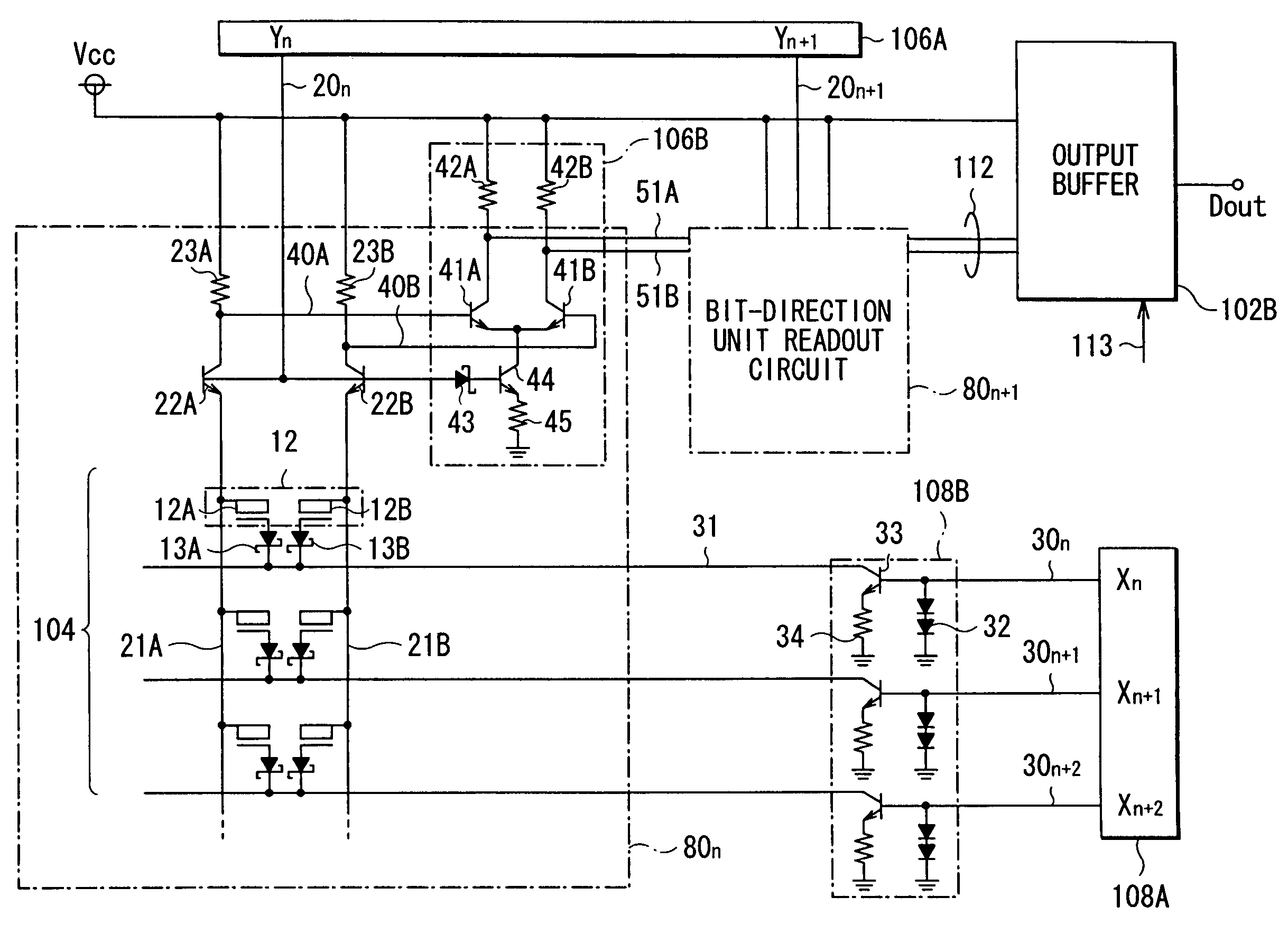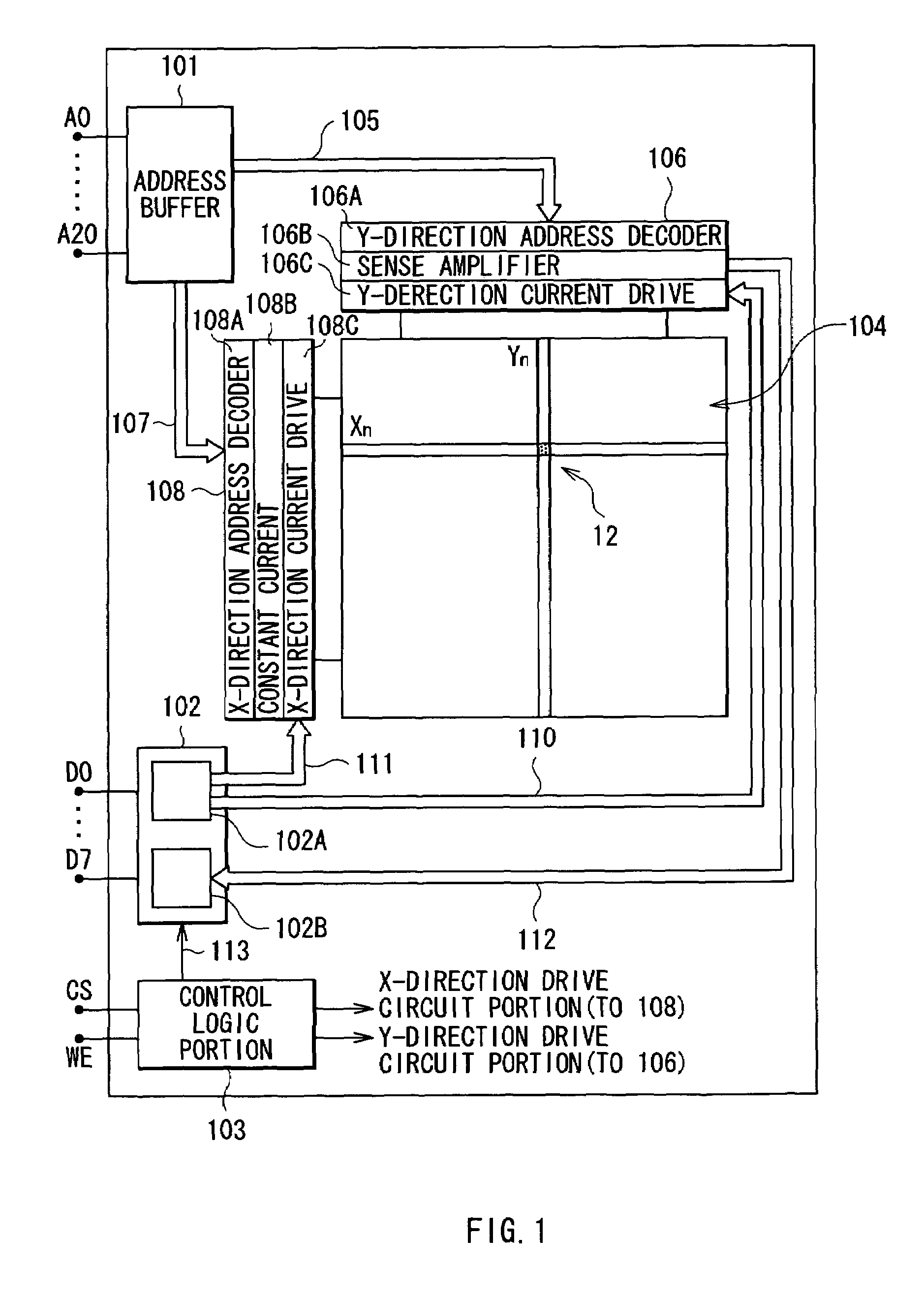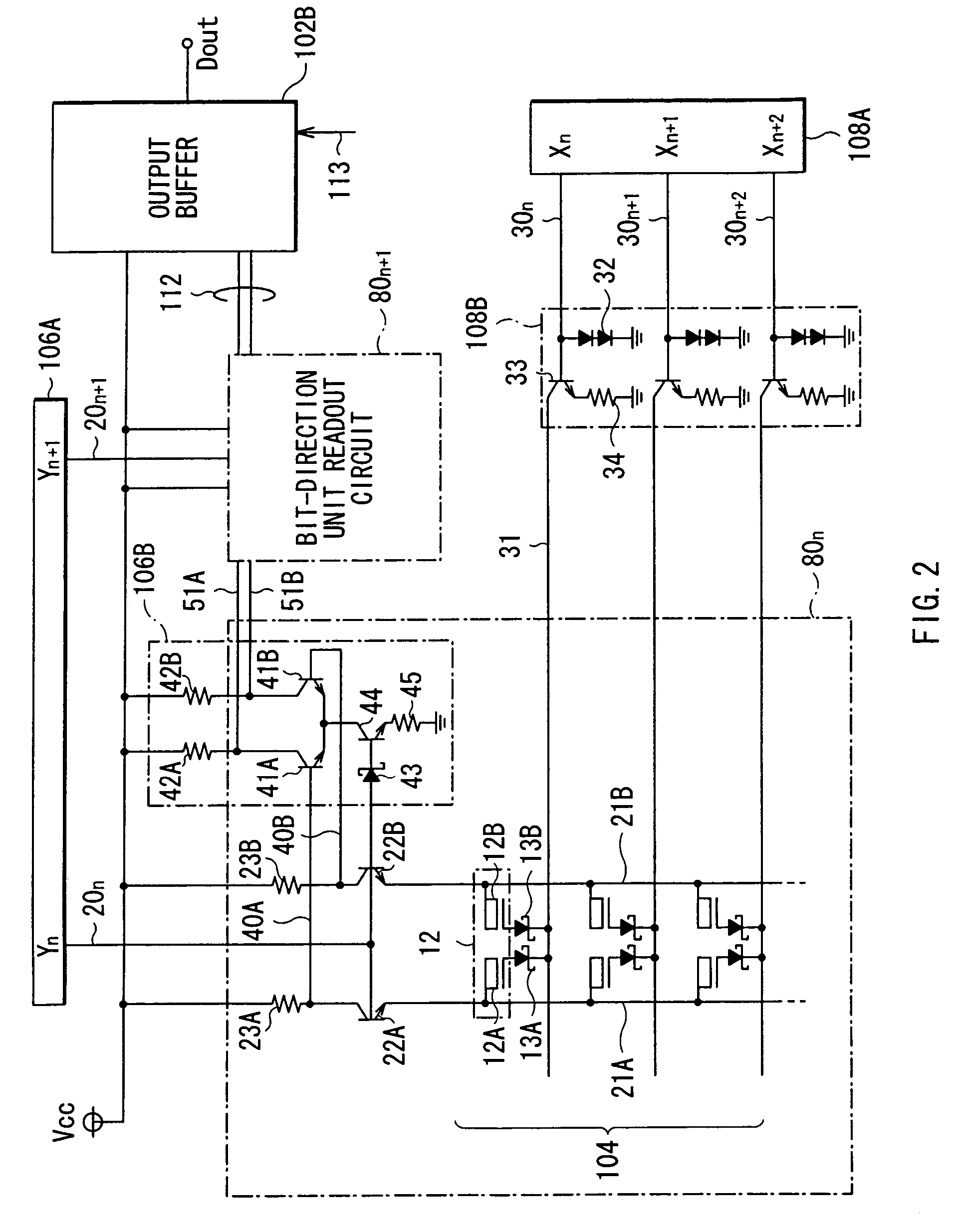Magnetic memory device and method of reading the same
a memory device and magnetic technology, applied in semiconductor devices, digital storage, instruments, etc., can solve the problems of inability difficult to improve storage capacity and access speed, and inability to ignore the noise of variations, etc., to achieve excellent operation stability, less power consumption, and high reliability
- Summary
- Abstract
- Description
- Claims
- Application Information
AI Technical Summary
Benefits of technology
Problems solved by technology
Method used
Image
Examples
first embodiment
[0072]FIG. 1 is a diagram showing a general configuration of a magnetic memory device according to an embodiment of the invention. The magnetic memory device is an MRAM embodied as a so-called semiconductor memory chip and has, as main components, an address buffer 101, a data buffer 102, a control logic portion 103, a storage cell group 104, a Y-direction drive circuit portion 106, and an X-direction drive circuit portion 108. In the embodiment, the storage cell group 104 is disposed in a large area in the center of a silicon chip of the magnetic memory device, and circuit parts and wires such as the drive circuit portions 106 and 108 are mounted in a small area in the periphery.
[0073]The storage cell group 104 is obtained by disposing a number of storage cells 12 in a word line direction (X direction) and a bit line direction (Y direction) so as to form a matrix as a whole. Each of the storage cells 12 is the minimum unit of storing data. In each of the storage cells 12, bit data ...
second embodiment
[0191]A second embodiment of the present invention will now be described in detail with reference to FIGS. 25 to 32. The second embodiment has a characteristic different from that of the first embodiment in part of the configuration of the read circuit. In the following description, the same reference numerals are given to components which are substantially the same as those in the first embodiment and their description will not be repeated.
[0192]A magnetic memory device of the second embodiment has: the sense bit lines 21A and 21B as a read line pair extending in the bit line direction and supplying read current to the pair of magnetoresistive devices 12A and 12B; the sense word line 31 as an ground-side read line for leading the read current passed through the pair of magnetoresistive devices 12A and 12B to the ground; the constant current circuit 108B shared by the plurality of sense word lines 31 and specifying the sum of the pair of read currents flowing in the pair of magnetor...
modification 2-1
[0206]FIG. 26 shows a modification 2-1. In the modification, the diodes 13A and 13B shown in FIG. 25 are replaced with the bipolar transistors 63A and 63B. Further, in the modification, the bipolar transistors 63A and 64B function as a second semiconductor switch for selecting one of the plural storage cell groups 104X, and the read common line 85 for combining the plural sense word lines 31 of the storage cells 104Y to one is provided. The storage cell group 104Y is a concrete example of a “first-direction storage cell group” in the present invention.
[0207]In the circuit configuration of the magnetic memory device shown in FIG. 26, in reading operation, sensing current flows in a path described below.
[0208]In the case where the storage cell 12 in the Yn column and the Xn+1 row is selected as an object to be read, a selection signal is input to the Yn-th bit decode line 20n and the Xn+1-th word decode line 30n+1. The selection signal input to the bit decode line 20n is input to the ...
PUM
 Login to view more
Login to view more Abstract
Description
Claims
Application Information
 Login to view more
Login to view more - R&D Engineer
- R&D Manager
- IP Professional
- Industry Leading Data Capabilities
- Powerful AI technology
- Patent DNA Extraction
Browse by: Latest US Patents, China's latest patents, Technical Efficacy Thesaurus, Application Domain, Technology Topic.
© 2024 PatSnap. All rights reserved.Legal|Privacy policy|Modern Slavery Act Transparency Statement|Sitemap



